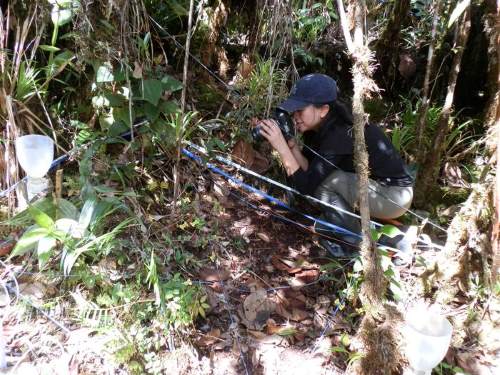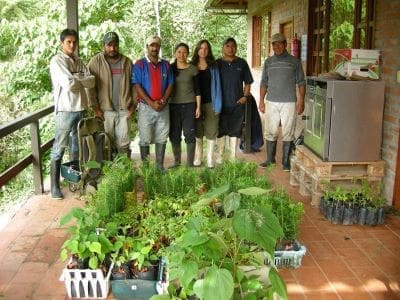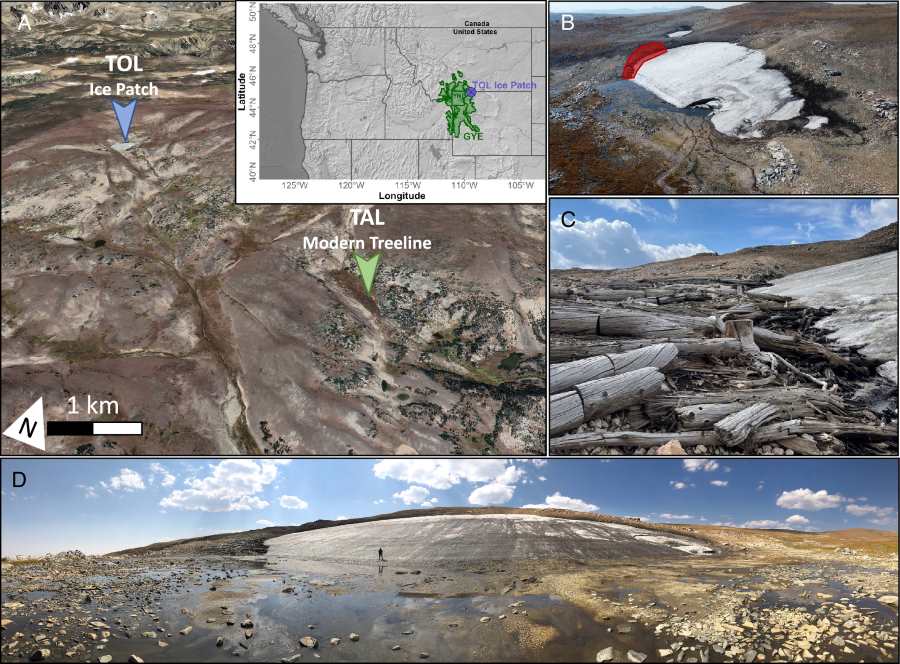In this article:
Feeling the heat across the Middle East
KAUST – A new international climate modeling study led by researchers at King Abdullah University of Science and Technology (KAUST) highlights different potential scenarios for the future climate of the Arabian Peninsula, depending on which climate policies are implemented.

The Arabian Peninsula has long been known for its high temperatures and water scarcity that challenge living and working there. However, these problems will only exasperate with the temperature increases predicted by all climate models, affecting a population that is expected to double between now and the end of the century.
KAUST Emeritus Professor Georgiy Stenchikov, who this month was part of the team of KAUST and international researchers that won the “Nobel” prize for high-performance computing, the ACM Gordon Bell Prize for Climate Modelling, led the Arabian Peninsula study using a sophisticated tool known as “statistical downscaling” that was applied to climate models to analyze the Middle East region.
“We applied statistical downscaling to 26 global climate models under different greenhouse gas emissions scenarios, giving us a spatial resolution of 9 km” said Stenchikov. “This fine resolution enhances our ability to detect and analyze regional warming and hotspots more effectively, presenting the most accurate regional-scale prediction of temperature change over the Middle East and North Africa.”
After applying this technique, Stenchikov, along with his colleagues and lead author Abdul Malik, found that some regions in the Middle East are heating at rates three times faster than global averages.
In the best-case scenario, if greenhouse gas emissions reach net zero by 2050, which reflects the goals of the Paris Agreement, animations from the modeling reveal that temperatures of the Arabian Peninsula will still rise by more than 2.5 degrees before the year 2100, with some parts warming 3.5 times faster than global averages.
In the more alarming scenario, if greenhouse gas emissions reach what climate scientists call the “high emission scenario,” several provinces in Saudi Arabia, including Riyadh, may see average temperatures rise by more than 9 degrees C this century. These temperature rises are expected to put severe stress on both the habitability and economic productivity of the region, reiterating the importance of good climate policy.
This research highlights KAUST’s focus on tackling regional climate issues, aligning with its efforts highlighted at COP16 to combat desertification and promote sustainability.
Journal Reference:
Malik, A., Stenchikov, G., Mostamandi, S., Parajuli, S., Lelieveld, J., Zittis, G., Sheraz Ahsan, M., Atique, L., Usman, M. ‘Accelerated Historical and Future Warming in the Middle East and North Africa’, Journal of Geophysical Research: Atmospheres 129, 22 (2024). DOI: 10.1029/2024JD041625
Article Source:
Press Release/Material by King Abdullah University of Science & Technology (KAUST)
Floods linked to rise in US deaths from several major causes
Columbia Mailman School – Over the last 20 years, large floods were associated with up to 24.9 percent higher death rates from major mortality causes in the U.S. compared to normal conditions.
A new study published in the journal Nature Medicine demonstrates the sweeping and hidden effects of floods — including floods unrelated to hurricanes, such as those due to heavy rain, snowmelt, or ice jams.
Scientists at Columbia University Mailman School of Public Health led the study in partnership with researchers at Arizona State University, Harvard University, and the University of Arizona.
Until now, there had been a critical knowledge gap about cause-specific flood mortality risks in the U.S. over time, and how risks may vary among groups within the population. The study’s findings provide information that could help public health agencies allocate resources.

“Flooding is an urgent public health concern as sea level rise, rapid snowpack melting, and increased storm severity will lead to more destructive and frequent events,” says first author Victoria Lynch, PhD, post-doctoral research fellow at Columbia Mailman School. “Our results show that floods were associated with higher death rates for most major causes of death, even for rain- and snow-related floods that are less likely to generate rapid emergency responses.”
“In the U.S., floods have a devastating effect on society, yet a comprehensive assessment of their continuing health impacts had been lacking,” says Robbie M. Parks, assistant professor in Environmental Health Sciences at Columbia Mailman School and senior author. “Our study is a first major step in better understanding how floods may affect deaths, which provides an essential foundation for improving resilience to climate-related disasters across the days, weeks, months, and years after they wreak destruction.”
After collecting 35.6 million U.S. death records from 2001 to 2018, the researchers used a statistical model to calculate how death rates changed in three-month periods following large floods when compared to equivalent periods in normal conditions.
Residents of 2,711 counties, covering over 75 percent of the U.S. population, experienced at least one large flood during the study period. Heavy rain was the most common cause of large flood events with the next most common cause due to snowmelt in the Midwest and tropical cyclones in the southeast.
The researchers found the largest overall increases in injury death rates among older people (24.9 percent) and females (21.2 percent) during the month of tropical storm/hurricane-related flooding, with increases in death rates associated with heavy rain-related flooding for infectious diseases (3.2 percent) and cardiovascular diseases (2.1 percent). Snowmelt-related floods were associated with higher death rates for respiratory diseases (22.3 percent), neuropsychiatric conditions (15.9 percent), and cardiovascular diseases (8.9 percent).
The rise in infectious diseases is likely related to disruptions to drinking water and sewage infrastructure that can lead to waterborne disease transmission. Chronic and neuropsychiatric conditions may relate to stress from persistent flood-related disruptions.
Socioeconomic factors that drive health outcomes in communities vulnerable to floods, as well as residents’ ability to evacuate during emergencies and respond to their aftermath, may also play important roles.
“The majority of our understanding of flood-related health impacts comes from major events like Hurricane Katrina or Harvey that, despite their devastation, are a sample of a larger phenomenon,” says Jonathan Sullivan, assistant professor in Geography, Development, and Environment at University of Arizona and co-author. “Our study shows that even floods caused by snowmelt or heavy rain, each uniquely driven by changes to climate and development, elevate mortality months after the fact providing critical knowledge of how to manage and adapt to floods.”
Previous research on climate and health by the authors of this paper has found elevated death rates after tropical cyclones in the U.S., including disproportionate increases in excess deaths in socially vulnerable communities of color, and that tropical cyclones are associated with the spread of waterborne infectious diseases.
Additional co-authors are Aaron Flores, Arizona State University; Sarika Aggarwal and Rachel C. Nethery, Harvard Chan School of Public Health; and Marianthi-Anna Kioumourtzoglou, Anne E Nigra, and Xicheng Xie, Columbia Mailman School of Public Health.
Journal Reference:
Lynch, V.D., Sullivan, J.A., Flores, A.B. et al. ‘Large floods drive changes in cause-specific mortality in the United States’, Nature Medicine (2025). DOI: 10.1038/s41591-024-03358-z
Article Source:
Press Release/Material by Columbia University Mailman School of Public Health
Tiny plants reveal big potential for boosting crop efficiency
By Aaron Callahan | Boyce Thompson Institute – Scientists have long sought ways to help plants turn more carbon dioxide (CO₂) into biomass, which could boost crop yields and even combat climate change. Recent research suggests that a group of unique, often overlooked plants called hornworts may hold the key.

“Hornworts possess a remarkable ability that is unique among land plants: they have a natural turbocharger for photosynthesis,” said Tanner Robison, a graduate student at the Boyce Thompson Institute (BTI) and first author of the paper recently published in Nature Plants. “This special feature, called a CO₂-concentrating mechanism, helps them photosynthesize more efficiently than most other plants, including our vital food crops.”
At the heart of this mechanism is a structure called a pyrenoid, which acts as a microscopic CO₂ concentration chamber inside the plant’s cells. The pyrenoid is a liquid-like compartment packed with the enzyme Rubisco, which captures CO₂ and converts it into sugar during photosynthesis. Surrounding the pyrenoid are specialized channels and enzymes that pump in CO₂, saturating Rubisco with its key raw material.
“This CO₂-concentrating mechanism gives hornworts a significant advantage,” said Laura Gunn, assistant professor at Cornell’s School of Integrative Plant Science. “Rubisco is an infamously inefficient enzyme, so most plants waste a lot of energy dealing with its tendency to also react with oxygen. But by concentrating CO₂ around Rubisco, hornworts can maximize its efficiency and minimize this wasteful ‘photorespiration’ process.”
Using advanced imaging techniques and genetic analysis, the research team found that hornworts likely use a much simpler system to concentrate CO₂. Unlike algae, which need complex machinery to pump CO₂ into their cells, hornworts probably use a passive approach that requires fewer moving parts.
“It’s like finding a simpler, more efficient engine design,” explained Fay-Wei Li, associate professor at BTI and co-corresponding author of the study. “This simplicity could make it easier to engineer similar systems in other plants, like essential crops.”
The potential impact is substantial. The research team estimates that installing a similar CO₂-concentrating mechanism in crops could boost photosynthesis by up to 60%, leading to significant increases in yields without requiring more land or resources.
The research also provides new insights into plant evolution. The scientists found that the machinery for concentrating CO₂ was likely present in the common ancestor of all land plants, but only hornworts retained and refined the ability over millions of years of evolution.
As we face the dual challenges of climate change and food security, this tiny plant might provide a blueprint for meaningful agricultural innovation. While much work remains before this natural technology can be utilized in other plants, the discovery offers a promising new direction for sustainable agriculture.
Journal Reference:
Robison, T.A., Oh, Z.G., Lafferty, D. et al. ‘Hornworts reveal a spatial model for pyrenoid-based CO2-concentrating mechanisms in land plants’, Nature Plants (2025). DOI: 10.1038/s41477-024-01871-0
Article Source:
Press Release/Material by Boyce Thompson Institute
Nutrient enrichment: an emerging threat to tropical forests

Ökológiai Kutatóközpont – Tropical forests, often referred to as the “lungs of the Earth,” are essential for sustaining life on our planet. They provide clean air, water, and unparalleled biodiversity. While deforestation due to slash-and-burn agriculture, mining, and logging remains the most recognized threat, less visible but equally dangerous forces are at work.
A new study reveals that nutrient enrichment – driven by human activities such as agriculture and fossil fuel combustion – poses a significant risk to the delicate dynamics of tropical forests.
The research, conducted by an international team of scientists from the University of Kaiserlautern-Landau (RPTU), the University of Applied Sciences and Arts Goettingen, and the HUN-REN Centre for Ecological Research in Hungary, focuses on how nutrient deposition affects tropical tree seedlings’ growth and biomass accumulation.
Their findings, published in Current Forestry Reports, show that this phenomenon can potentially disrupt forest composition and resilience, particularly in the face of global climate change.
By synthesizing data from 59 studies conducted across tropical regions worldwide, the researchers employed meta-analysis to uncover broad patterns of nutrient effects. Their analysis revealed that nutrient addition significantly boosted tree seedling growth, with shoot biomass increasing by an average of 26% and growth rates by 14%. Notably, the combination of nitrogen (N), phosphorus (P), and potassium (K) produced the most pronounced effects, driving growth rate increases of up to 27%.
These impacts were particularly pronounced in seasonally dry sites, where growth rates surged by 38% and shoot biomass by an impressive 70%.
Lead author Dr. Daisy Cárate Tandalla explains: “NPK are fundamental nutrients for plant growth. However, many tropical soils are nutrient-limited. Adding these nutrients disproportionately benefits fast-growing, competitive species, potentially shifting forest composition.”

Human activities are dramatically altering natural nutrient cycles. While volcanic activity and wildfires have historically contributed to nutrient deposition, agriculture and fossil fuel burning have intensified and expanded this process to even the most remote tropical regions. These nutrient inputs can give a competitive edge to certain tree species, leading to homogenized forests with fewer species – a trend that threatens biodiversity and ecosystem stability.
Senior author Dr. Péter Batáry warns: “These changes may reduce species diversity across entire food chains and weaken forest resilience in the face of climate change. The loss of diversity also diminishes the forests’ ability to adapt to environmental stressors.”
The study also highlights the complexity of tropical forest research.
Co-author Dr. Jürgen Homeier from the University of Applied Sciences and Arts Goettingen notes: “The studies we reviewed used a mix of methods – greenhouse pot experiments, transplantation trials, and in-situ fertilizer applications. Identifying seedlings to the species level remains a significant challenge due to the extraordinary diversity and similarity of young tropical trees.”
Tropical forests are a cornerstone of life on Earth, and preserving their complexity and resilience is crucial. This study is a timely reminder that even remote human activities can have far-reaching consequences for the natural world.
Journal Reference:
Cárate Tandalla, D., Homeier, J. & Batáry, P., ‘Responses of Tropical Tree Seedlings to Nutrient Addition: A Meta-analysis to understand future changes in Tropical Forest Dynamics’, Current Forestry Reports 11, 3 (2025). DOI: 10.1007/s40725-024-00240-6
Article Source:
Press Release/Material by HUN-REN Ökológiai Kutatóközpont
Ice patches on Beartooth Plateau reveal how ancient landscape differed from today’s
By Diana Setterberg | Montana State University – Montana State University scientists say the frozen remnants of an ancient forest discovered 600 feet above the modern tree line on the Beartooth Plateau may portend possible changes for the alpine ecosystem if the climate continues to warm.
A paper about the discovery was published in the journal Proceedings of the National Academy of Sciences. It describes what scientists have learned by studying the remains of a mature whitebark pine forest that formed at 10,000 feet elevation about 6,000 years ago, when warm-season temperatures in the Greater Yellowstone Ecosystem were similar to those of the mid-to-late 20th century.
The forest thrived for centuries until the climate began to cool about 5,500 years ago due to declines in summer solar radiation, the researchers found. The cooler temperatures shifted the tree line downslope and transformed the high mountain landscape from forest to the alpine tundra that exists today.
One of the paper’s authors, David McWethy, associate professor in the Department of Earth Sciences in MSU’s College of Letters and Science, said subsequent volcanic activity in the Northern Hemisphere caused the region’s already cooling temperatures to plunge.
The pine forest was encased quickly in ice, where it remained preserved until the ice patch began to thaw in recent years. McWethy said its discovery yielded the first evidence from an alpine area of the ecosystem to indicate that mature forests had established upslope when temperatures were warmer.
“This is pretty dramatic evidence of ecosystem change due to temperature warming,” he said. “It’s an amazing story of how dynamic these systems are.”

The paper states that ice patches, unlike glaciers, do not flow. And until recently, the authors wrote, the ice patches slowly and near-continuously accumulated ice, “allowing preservation of deposited materials such as pollen, charcoal and macrofossils within their frozen layers.”
McWethy said the idea to explore Beartooth ice patches for at least 10,000 years of clues about past climate and environmental conditions grew out of work by Craig Lee, now an assistant professor in MSU’s Department of Sociology and Anthropology. In 2007, Lee recovered a portion of a 10,300-year-old atlatl from an ice patch on the plateau, alerting scientists that several millennia worth of cultural materials and environmental data was preserved in nearby layers of ice.
“Most of our best long-term climate records come from Greenland and Antarctica. It’s not a small thing to find ice patches that persisted for that long of a time period at lower latitudes in the interior continent,” McWethy said. The ice patches on the plateau measure hundreds of square meters size, which is fairly small compared to persistent ice masses elsewhere.
In 2016, Lee, McWethy and Greg Pederson, paleoclimatologist for the U.S. Geological Survey’s Northern Rocky Mountain Science Center and lead author of the just-published paper, were awarded a $100,000 Camp Monaco Prize to gather information about environmental change and past human activity from ice patches on the plateau.
In 2018, they and others were awarded a grant from the National Science Foundation to study additional alpine ice patches in the area to reconstruct the ecosystem’s long-term climate history and its influence on Indigenous North Americans. McWethy said the NSF-funded work has involved a broad collaboration between tribes, federal agencies, archaeologists and scientists at several universities. The tree line study covers one aspect of the work.
The scientists say it was necessary to study multiple elements of the ancient ecosystem to piece together the frozen forest’s complete story. Members of the team, including MSU graduate and undergraduate students, analyzed layers of water isotopes and organic materials in ice cores taken from the patch, and Pederson harvested cross-sections of wood from the ancient trees for radiocarbon dating. Pederson said the work proved that tree line on the plateau shifted upward in response to regional warming and that the pine forest thrived for 500 years while climate conditions remained moderate and moist.
“The plateau seems to have been the perfect place to allow for ice patches to establish and persist for thousands of years, recording important information on past climate, human activity and environmental change,” Pederson said.
The results of the study suggest current climate conditions could lead to trees moving upslope into areas of the plateau that are now tundra. Pederson stressed, however, that even though the results of the study are site specific, there are strong connections to climate controls on tree line elevations globally.
“Growing season temperatures are the primary control on tree line elevation and latitude,” Pederson said. “However, at individual tree line locations, other factors such as moisture, wind, snowpack and human disturbance may play an important role in dictating forest structure and elevational limits.”
For those reasons, it’s impossible to predict exactly what future tree line forests on the Beartooth Plateau will look like in terms of density, distribution or tree species composition, which will vary depending on how much warming occurs, according to McWethy and Pederson. The tree line will likely rise as the climate warms, they say, but precipitation levels will determine the structure and extent of new forest.
Changes will have significant implications for the future ecosystem, say the study authors, including climate expert and MSU Regents Professor Emerita Cathy Whitlock, who has worked in the Greater Yellowstone Ecosystem for 40 years. She and Pederson said less high-elevation snowpack would affect downstream water supplies for irrigation and electricity generation. McWethy added that if forests begin to establish in tundra, fuel conditions could change dramatically, potentially increasing the risk of wildfires.
“That’s the reason why studies of past ecological change are more than interesting pieces of science,” Pederson said. “They have much larger implications for the resources we all depend on.”
Journal Reference:
G.T. Pederson, D. Stahle, D.B. McWethy, M. Toohey, J. Jungclaus, C. Lee, J. Martin, M. Alt, N. Kichas, N. Chellman, J.R. McConnell, C. Whitlock, ‘Dynamic treeline and cryosphere response to pronounced mid-Holocene climatic variability in the US Rocky Mountains’, Proceedings of the National Academy of Sciences 122 (2) e2412162121 (2025). DOI: 10.1073/pnas.2412162121
Article Source:
Press Release/Material by Montana State University
Featured image credit: Gerd Altmann | Pixabay




